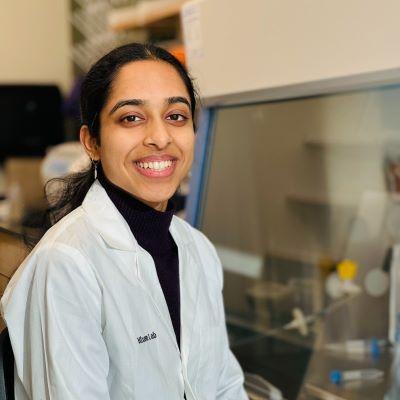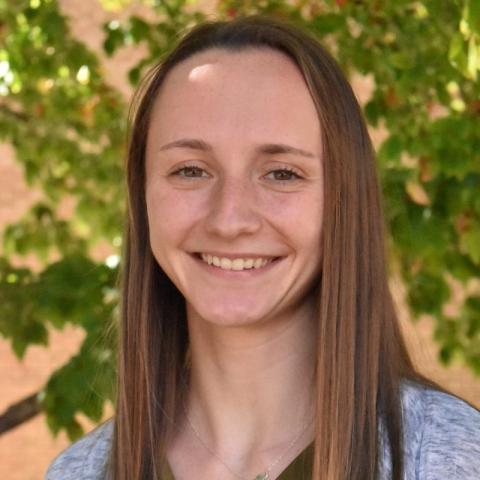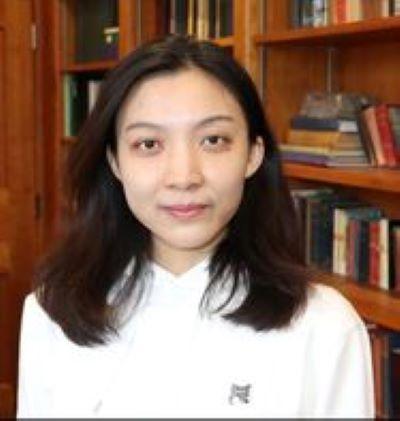
Scar Reduction in Soft-Tissue Wound Healing: Electrical and Chemical Stimulation

University of Connecticut Health Center, Orthopedic Surgery
Research Focus: Tissue engineering biomaterials
The Kumbar Laboratory: https://health.uconn.edu/musculoskeletal-institute/research/our-labs/
Musculoskeletal injuries require surgical intervention, forming scar tissue during the natural healing. Scar tissue, characterized by a disorganized fibrotic extracellular matrix with altered components, often hinders tissue regeneration. To address this challenge, we have developed an ionically conducting (IC) chitosan scaffold that serves as a matrix for delivering electrical stimulation (ES) and pharmacological agents to promote regenerative healing while minimizing scar formation. Our IC implant promotes the benefits of ES with the controlled release of a small molecule, 4-aminopyridine (4AP), to enhance regenerative healing and reduce scarring. Our IC matrix maintained excellent ionic conductivity (130-145 mS/cm for 12 weeks) and sustained the release of the highly water-soluble 4-AP over eight weeks. In an experimental model using rats with full-thickness skin wounds, we found that wounds treated with ES+4-AP implants exhibited significantly faster closure rates and a higher Col-I/Col-III ratio, indicating enhanced regeneration and reduced scar formation. We further assessed the progress of wound healing by evaluating the neurotrophic expression and cytokeratins. These findings hold promise in addressing the growing issue of musculoskeletal injuries and improving the overall well-being of affected individuals, providing a reassuring and confident outlook for the future.
Exploring the Stability of Polyhistidine-Tagged Surface Modifications

University of New Hampshire, Chemistry
Research Focus: Surface chemistry
The quest for highly sensitive detection technologies has driven significant advancements in sensor design and functionality, central to which is the immobilization of a recognition element onto the sensing surface. Despite these advancements, developing a stable, universal anchor-linker platform that accommodates various recognition elements remains challenging. This study focuses on comparing the long-term stability of biosensor platforms that utilize two different anchoring groups: thiols and N-heterocyclic carbenes (NHCs), each coupled with a polyhistidine linker. To evaluate long-term stability, we employed non-redox mediated electrochemical impedance spectroscopy (EIS). Preliminary results indicate that thiol controls show a greater decrease in the inverse square of capacitance (1/cap2) compared to thiol-based polyhistidine-tagged recognition elements, suggesting less alteration in the surface construct of the thiol-based surfaces. Additionally, thiol-based surfaces demonstrated higher charge transfer resistance than those modified with NHCs, indicative of a more densely packed surface. However, our non-redox-mediated tests reveal different trends in surface modification. Furthermore, our findings underscore the importance of electrode preparation methods in optimizing the modification of NHC-based monolayers. This study aims to identify key factors that influence the stability and efficiency of anchor-linker combinations in sensors, thereby enhancing the development of more reliable and versatile platforms.
Incorporating Hexahydroxytriphenylene-based Metal–Organic Frameworks into Electrochemical Sensors for the Detection of Nitric Oxide in Aqueous Media

Dartmouth College, Chemistry Department
Research Focus: Conductive nano-materials for biosensing applications
Conductive metal–organic frameworks (MOFs) offer a number of advantages as working electrode materials for electrochemical sensing, including their high surface area, tunable structure, and electrical conductivity. This research presents the first use of conductive MOFs as the active material in electrochemical sensors for nitric oxide in the liquid phase and describes the structure–function relationship of MOFs based on hexahydroxytriphenylene (HHTP) as thin film working electrodes in NO detection. Four HHTP-based MOFs linked with first-row transition metal nodes were compared using cyclic voltammetry. We show that the metal plays a critical role in controlling the sensitivity of the voltametric sensing response of MOFs towards the detection of NO during the electrochemical oxidation and demonstrate the incorporation of HHTP-based MOFs into portable sensor architectures including screen-printed electrodes and thread-based sensors.
Exploring Properties of Cryogel and Electrospun Silk Fibroin Scaffolds

Dartmouth College, Thayer School of Engineering
Research Focus: Biomedical Engineering, Tissue Engineering.
Musculoskeletal injuries affect 32 million people in the United States each year, and self-repair is often inefficient in healing. Hard-to-soft tissue interfaces, e.g., bone-tendon, are impacted in 45% of musculoskeletal injuries and often requires surgical revision. There is an urgent need to develop improved models to elucidate properties that allow the interface to withstand complex mechanical loads and act as a crosstalk hub involving different cell populations. Tissue engineering can be used to develop in vitro models by combining scaffolds, cells, and bioactive factors. Combining tissue engineering fabrication methods is one way to replicate bone-tendon tissue interfaces in a single scaffold. The cryogelation fabrication technique creates spongy, durable scaffolds well-suited for bone applications, while electrospinning creates nanofibers that mimic tendon. We hypothesize that combining cryogelation and electrospinning, with silk fibroin as the base material for improved interfacial scaffold attachment, will support the development of a bone-tendon interface model. Here, we use Bombyx mori silk to create combined electrospun and cryogel scaffolds. The silk cryogel portion had average pore areas of 49.71 µm via SEM imaging. Uniaxial compression testing of the cryogel at a strain end point of 50% resulted in a peak stress value of 70 kPa and an average modulus of 139 kPa[*] . The swell tests of the cryogel revealed an average swelling ratio of 1350% from the starting mass after 24 hours, with more than 40% of maximum swelling reached by one hour. Comparatively, average fiber diameter was 530 µm for the electrospun silk. Uniaxial tensile testing of the electrospun component revealed an elastic modulus ranging between 19 and 47 kPa. Ongoing work will investigate the use of additives for mineralization to improve cryogel mechanical properties and silk blends (such as addition of polyethylene oxide to silk) for electrospinning to further support the nanofibrous structure. Additionally, bone/tendon cell studies will be used to determine biological viability and cell differentiation potential. The outcome of this study is an integrated cryogel and electrospun scaffold using silk fibroin as the base material to replicate the bone-tendon interface. *This Is sample 6.30
A Multi-spectral Imaging Platform for Point-of-Care Applications

Mete Aslan, PhD student
Boston University, Electrical and Computer Engineering
Research Focus: Biosensors.
Single molecule counting, is an exciting development in diagnostics that provides resolution and sensitivity far beyond those of ensemble measurements. However, most emerging digital detection techniques are based on complicated particle confinement/isolation strategies, increasing the cost and complexity of the entire process for POC applications. Our lab has developed Interferometric Reflectance Imaging Sensor (IRIS) technology utilizing light interferometry from an optically thin film for label-free detection of individual viruses with high sensitivity and utilizes z-scan acquisition to capture the defocus signature unique to the particle. However, z-scan acquisition imposes drawbacks, such as, the need for high-resolution scanning optics and computationally expensive algorithms. In this poster, we will present our new modality pixel-diversity IRIS (PD-IRIS) where the optical signature of the particle is encoded into different wavelengths and unpacked using a regular color camera.
A Covalent Organic Framework Sensory Array for the Chemiresistive Detection and Differentiation of Gasotransmitters

Georganna Benedetto, Graduate Student
Dartmouth College, Chemistry
Research Focus: Materials Chemistry
The structure‒property relationships of covalent organic frameworks (COFs) enables detection and differentiation of gases. Metallophthalocyanine (MPcs) monomers have shown chemiresistive sensing capabilities for gasotransmitters. However, MPcs feature irreproducible sensing metrics due to imprecise active site distribution and require high driving voltages. Reticular synthesis enables integration of MPc into a COF structure. Varying the metal center enables systematic investigation of the effect of d-orbital electron density on sensing. This COF array enables gasotransmitter detection and differentiation and materials retain responsiveness to analytes in humid air. This work improves our fundamental understanding of COF synthesis and control of emergent COF sensing performance by studying structure‒property relationship relative to analyte‒material interactions.
Characterization of the Dynamic Stimuli-Response of Surface-Immobilized Elastin-like Polymer V40

Sarah Bramlitt-Harris, Ph.D. Candidate
University of New Hampshire, Chemistry
Research Focus: Electrochemical biosensors
Elastin-like polymers (ELPs) are intrinsically disordered genetically engineered polymers that share a common pentapeptide repeat of [VPGXG] (V=valine, P= proline, G= glycine, and X= guest residue). In solution, below their transition temperature, ELP’s are soluble; at temperatures above their transition temperature, ELPs aggregate and form new conformations.1 These dynamic structural changes promote favorable intra- and intermolecular hydrophobic interactions and minimize unfavorable interactions with aqueous solutions.1 Surface-immobilized ELPs will operate differently than solution based ELPs, and therefore should also be explored. Previous SEEDS group investigated the salt stimulus response of an immobilized ELP, I40 (with a structure of [VPGIG]40), via electrochemistry.2 The findings of this research suggest that there was a significant dynamic structural change of the I40-modified surfaces when moved from a no salt solution to a high salt solution.2 Data also suggests that these structural changes to the I40 morphology were both reversible and reproducible.2 Now, we are interested in comparing the results of the I40-modified surface to that of a V40-modified surface, another ELP with the structure of [VPGXG]40 (X= V:A:G, 5:2:3). We have been actively using electrochemical impedance spectroscopy (EIS) to monitor the modification, reproducibility, and reversibility of the stimuli-responsive V40-modified surfaces.
Acknowledgements: We acknowledge Dr. Eva Rose Balog and the Balog lab at the University of New England for providing ELPs for this work. We would also like to acknowledge the Surface Enhanced Electrochemical Diagnostic Sensors (SEEDS) Laboratory and the Biologically Inspired On-Demand Strategies for Nanostructured Sensors (BIO-SENS) team for their guidance. Financial support was provided by an NSF EPSCoR (#2119237).
References:
(1) Marvin, L. et al, PloS One 2019, 14 (5), e0216406.
(2) A. Morales, M. et al, J. Soft Matter 2019, 15 (47), 9640.
Chemical Sensing Arrays of Conductive Metallophthalocyanine-Based Metal-Organic Frameworks

Evan L. Cline, Graduate Researcher
Dartmouth College, Chemistry Department
Research Focus: Materials Chemistry and Chemiresistive Gas Sensors.
Advisor: Katherine Mirica.
https://www.linkedin.com/in/evan-l-cline/
http://www.miricagroup.com/
Chemiresistive sensor arrays leverage chemiresistive gas sensing materials to generate highly sophisticated sensing responses towards gaseous analyte mixtures. This work describes the synthesis, characterization, fundamental investigation, and device integration of a suite of nine octahydroxyl-linked, first row transition metal centered and linked metallophthalocyanine (MPc)-based metal organic-frameworks (MOFs). The superb physical and electronic transport properties of the framework materials permit the generation of chemiresistive devices which were fabricated by dropcasting these MPc-based MOFs onto interdigitated gold electrodes. The MPc-based MOF devices show sensitive and selective responses towards small reactive gases (NO, CO, and H2S) at room temperature using low applied voltages (0.10 V). We demonstrate that through the strategic molecular tuning of metallophthalocyanine molecular building blocks and the synthetic optimization of the metal coordinated framework materials, fundamental molecular insights can be attained while producing promising application-focused sensor array performance.
Laminin-Decorated Gelatin Microporous Injectable Hydrogel for the Encapsulation and Differentiation of Neural Progenitor Cells

Seth Edwards, Postdoctoral Research Associate
University of New Hampshire, Chemical Engineering
Research Focus: Biomaterials and Tissue Engineering.
Advisor: Kyung Jae Jeong.
Nervous tissues have limited capacity to regenerate, and damage to these tissues, due to neural injuries or neurological disorders, is often debilitating to the affected patients. The delivery of neural progenitor cells (NPCs), through biomaterials as a delivery vehicle is a promising strategy to promote neural tissue repair. Neural differentiation of NPCs affected by their mechanical and chemical environment, and I investigated the use of gelatin-based injectable microporous hydrogel to promote neural differentiation of encapsulated NPCs. In addition, I demonstrate a novel method of improving NPC adhesion in the microgel matrix by a facile covalent incorporation of laminin by microbial transglutaminase (mTG) during the crosslinking process, and investigate its effect on cell adhesion.
Therapeutic Ketosis Attenuates Asthma Associated Airway Hyperresponsiveness by Targeting Bronchial Smooth Muscle

Amanda Fastiggi, Predoctoral Fellow
University of Vermont, Cellular, Molecular and Biomedical Sciences
Research Focus: Understanding the effects of ketone bodies on the biomechanics of bronchial smooth muscle hyperresponsiveness in the context of asthma.
Advisor: Matthew Poynter.
Asthma is a complex lung condition characterized by heightened sensitivity to triggers culminating in airway constriction and breathing difficulties. During allergic asthma exacerbations, histamine release directly induces bronchial smooth muscle contraction and airway narrowing. Induced endogenously during diverse nutritional states, the ketone body, beta-hydroxybutyrate (BHB), decreases asthma-induced airway constriction in vivo. In vitro mechanistic studies reveal that BHB mitigates histamine-induced calcium mobilization in and contraction of bronchial smooth muscle cells. These results suggest that elevating systemic BHB concentrations via dietary interventions could alleviate symptoms across various asthma subtypes through modulating bronchial smooth muscle cell signaling and function.
Impedance (EIS) Transduction towards Industrial Bioreactor Protein Sensing

Stanley G. Feeney, PhD Candidate
University of New Hampshire, Chemical Engineering
Research Focus: Sensors, electrochemistry, surface chemistry.
Advisor: Jeffrey Halpern.
https://www.linkedin.com/in/stanleyfeeney/
http://sites.google.com/view/seedslab
We will showcase research being conducted at the University of New Hampshire (UNH) Surface Enhanced Electrochemical Diagnostic Sensors (SEEDS) Laboratory through an NSF funded Bio-Inspired On-demand Strategies for Engineering Nanostructured Sensors (BIO-SENS) initiative. We will review progress towards the development of an industrial bioreactor protein sensing platform. Multiple research projects will be reviewed including surface modification improvement, temperature stimulus and stability, and response to pH. The focus will be investigation of the stimulus response and stability of the surfaces with electrochemical impedance spectroscopy (EIS). EIS does not require redox active mediators or additives. We will show progress at UNH in interpreting our surfaces with EIS and our long-term collaborative research goals in developing a protein biosensor suitable for an industrial bioreactor.
Zinc Alloys for Orthopedic Implants

Adrianne Gowie, Graduate Student
Dartmouth College, Material Science & Engineering
Research Focus: Orthopedic Biomaterials.
Advisor: Ian Baker.
An animal study will be conducted on mice: Implant will be placed under the skin of mice to determine reaction and hypersensitivity to Zinc alloyed implant. Mice are immunocompetent, so they have immune systems that may respond to our implants in very manageable, predictive, and measurable ways. There will be a total of 116 mice separated in two 2 separate studies. Within each study there will be 4 separate groups: Zinc alloy, Titanium alloy, pure Zinc, and Mock surgery. Mice will be implanted with varying metal implants on Day 0. 3 mice from each group will be harvested for analysis at 1, 3, 5 and 7 days post implantation.
Characterizing the Physical Properties of 3D Printed Peptide Polymer Constructs

Diana Hammerstone, Graduate Research Fellow
Lehigh University, Materials Science and Engineering
Research Focus: Polymeric Biomaterials for Tissue Engineering.
Advisor: Lesley Chow.
Biochemical and physical properties are known to influence cell response, but it is difficult to decouple these properties in biomaterials. Our lab developed a platform to fabricate scaffolds functionalized with bioactive peptides in a single step by 3D printing with peptide-poly(caprolactone) (PCL) conjugates. Here, we investigated how adding conjugates with a positively charged hyaluronic acid binding peptide (HAbind-PCL) or a negatively charged mineralizing peptide (E3-PCL) affects the physical properties of the resulting 3D printed scaffold.
Effect of Cyclic Strain on Alveolar Type 2 Epithelial cells (AT2 cells)

Chika Ikpechukwu, Graduate Student
University of Vermont, Biomedical Engineering
Research Focus: Lung Tissue Engineering.
Advisor: Daniel Weiss.
Environmental conditions including lung extracellular matrix (ECM) composition and stiffness as well as
cyclic mechanical strain i.e. stretch of lung cells during breathing, are increasingly recognized as affecting
proliferation, migration and differentiation of lung cells including airway and alveolar epithelial cells.
Better understanding of the effects of these environmental influences in decellularized lung scaffolds on
behaviors of seeded cells will result in enhanced strategies for functional seeding. In prior studies, we
have demonstrated significant effects of decellularized pig lung ECM composition and stiffness, as well as
growth media on an important alveolar epithelial cell function: differentiation of type 2 to type 1 alveolar
epithelial cells. In this study, we have developed a system for assessing effects of cyclic mechanical stretch
and using this, have demonstrated significant effects of stretch on AT2 to AT1 differentiation. The goal
of the current studies is to more extensively probe the effects of cyclic mechanical stretch, in combination
with selected ECM composition, growth media, and time course on AT2 to AT1 differentiation.
Inhibition of Fatty Acid Binding Protein Family Slows Multiple Myeloma Tumor Growth and Alters Lipid Species Composition

Michelle Karam, Research Assistant
MaineHealth Institute for Research, Center for Molecular Medicine
Research Focus: Fatty acid binding proteins and their effects on multiple myeloma progression.
Advisor: Michaela R. Reagan.
Multiple Myeloma is an incurable blood neoplasm with only a 53% 5-year survival rate. Fatty Acid Binding Proteins (FABPs) bind and transport lipids throughout the cell. Inhibition of these proteins using a small molecule inhibitor (BMS309403) reduced myeloma cell viability in vitro and murine myeloma burden, albeit with variable in vivo outcomes likely stemming from drug stability concerns in circulation. Here, we worked on addressing the pharmacokinetic challenges by using intratumoral BMS309403 delivery in subcutaneous myeloma tumors, as a proof-of-principle experiment. Two cohorts of mice (8-week-old or 20-week-old SCID-Beige females) were inoculated with 1x10^6 MM.1Sgfp+luc+ myeloma cells, randomized by mouse weight, and subcutaneously treated with either BMS309403 (5 mg/kg) or vehicle, 3-5 times weekly. Bioluminescent imaging (BLI) was performed twice weekly, and tumors collected post-sacrifice were used to evaluate effects on tumor mass and lipidomic profiles. In both studies, BLI analysis revealed significantly lower tumor burden in BMS309403-treated mice compared to vehicle-treated mice, and BMS309403-treated tumor masses were smaller on average, although insignificant. BMS309403 treatment resulted in the upregulation of 27 cardiolipin molecular species in myeloma tumors, as assessed by mass spectrometry proteomics. These data propel BMS309403 towards clinical relevance and offer insight into FABP molecular mechanisms in myeloma cells.
Center of Integrated Biomedical and Bioengineering Research: Growing UNH’s Biomedical Research Ecosystem

Jaxson Libby, Graduate PhD Student
University of New Hampshire, Molecular Cellular and Biomedical Sciences
Research Focus: Cancer Mechano-biology.
Advisor: Sarah Walker.
The University of New Hampshire’s Center of Integrated Biomedical and Bioengineering Research (CIBBR) has embarked on a second 5-year, $10M Center of Biomedical Research Excellence award from the National Institutes of General Medical Sciences (NIGMS). This enables CIBBR to continue advancing cutting-edge interdisciplinary research and foster innovation in the biomedical and bioengineering sciences at UNH. Between 2017 to 2023, CIBBR’s investigators received $13.1 million in grant awards — doubling NIH funding to UNH — and generated over 160 publications. CIBBR facilitated the hiring of 14 new faculty in NIH-relevant disciplines and invested $1.9 million in new research instrumentation. CIBBR’s research portfolio encompasses cancer biology, tissue engineering, molecular and behavioral neuroscience, biosensors, multi-omics and bioinformatics.
The new five-year COBRE award will continue to increase research capacity at UNH through strategic hiring of early-stage and senior-level researchers, expansion of research instrumentation in well-managed core facilities in collaboration with the University Instrumentation Center, and creation of an innovative Data Science Core to provide bioinformatics, biostatistics and data analytics services to UNH and other researchers. CIBBR continues to foster collaborations with other academic institutions and industry partners to facilitate knowledge exchange, promote technology transfer, provide workforce training for careers in biomedicine and biotechnology, and ensure that basic discoveries in the biomedical and bioengineering sciences can be applied to improving human health.
Dimensionality and Matrix Stiffness Jointly Regulate Cell Migration from Aggregates

Rabeya Sharmin Lima, Graduate Student
University of New Hampshire, Chemical and Bioengineering
Research Focus: Biomaterials and Tissue Engineering.
Advisor: Linqing Li.
While single-cell studies using synthetic hydrogels have revealed key biochemical and biophysical
regulators that control cell migration pattens, understanding how cell-cell and cell-matrix
interactions regulate multicellular migration within spatially arranged microenvironment remains
elusive. Here, we develop a polysaccharide-based, photo-crosslinked hydrogel system enabling
independent modulation of adhesive cues and mechanical properties for cell culture. We also
employed fabrication tools to generate multicellular aggregates based on human dermal fibroblasts
(HDFs) and Human Umbilical Vein endothelial (HUVECs) cells , which were cultured both on 2D
surface and encapsulated within 3D dextran-based hydrogel. This facilitated the investigation of
cell migration patterns, multicellularity during invasion, and matrix protein deposition.
Using these systems, our observation reveals that cells migrating from aggregates on 2D hydrogel
substrates exhibited rapid single-cell migration characterized by large cell area and well-developed
lamellipodia and filopodial cell morphology. The extent and speed of cell migration were
controlled by the concentration of adhesive motif and substrate stiffness. Conversely, HDFs
migrating in 3D hydrogels adopted a slower invasion speed with mesenchymal migration
dependent on matrix stiffness and pore size. Collective cell migration was observed in soft matrix
whereas limited cell invasion occurred in stiffer hydrogels. We also investigated the impact of
aggregate size on cell migration and found that smaller size of aggregates promoted increased cell
migration. Depending on the material stiffness, migrating cells exhibited distinct migration modes
expressing alpha-SMA, and N-cadherin, indicative of an epithelial-to-mesenchymal transition.
These findings will expand the scope of fundamental adhesion biology and mechanobiology, and
using tunable biomaterials with tailored mechanical properties allows to explore how multicellular
interaction with the surrounding environment during wound healing, and differential migration
patterns within tumor-like microenvironments paving the way for studying potential therapeutic
for cancer metastasis.
Light Induced ‘ON’-‘OFF’ Clustering of Photo-responsive Ligand-coated Nanoparticles: A simplistic model

Remya Ann Mathews Kalapurakal, Postdoctoral Research Associate
University of New Hampshire, Chemical Engineering
Research Focus: Theoretical and Computational Modeling of Biomaterial Systems.
Advisor: Harish Vashisth.
https://www.linkedin.com/in/remya-kalapurakal/
https://sites.google.com/site/vashisthlab
Light-induced self-assembly (LISA), a nanoscale phenomenon, leverages photo-responsive ligands to precisely control particle interactions, enabling dynamic, reversible assembly with applications in materials, optics, and biomedicine. Photo-responsive ligands like azobenzene dithiol (ADT) aid in the control of the light-induced self-assembly of gold nanoparticles coated with ADT (ADT-AuNPs). The exposure to the ultraviolet (UV) light drives the trans-cis transition of ADT. The higher dipole-moment in the cis-ADT than trans-ADT results in the reversible transition from a disordered to an aggregated phase, induced by the dipole-dipole attraction. Singh et al., (Comput. Theor. Chem., vol. 1206, pp. 113492, 2021) reported the interaction energy of a pair of ADT ligands in the cis and trans conformations, as a function of distance between the center of mass of the azo groups. The calculations were performed for different solvent compositions using quantum chemistry calculations. The data was fit onto a generalized potential energy equation similar to the Lennard-Jones (LJ) form, but having different attractive and repulsive contributions for each isomer. Using this generalized equation for the ligand-pair interaction, we calculated the effective interaction energy between a pair of ADT-AuNPs in the cis and trans conformations. The effective energy calculated was compared using discrete and continuous descriptions. In order to identify the optimum length of the ligand which incorporated experimental effects like bending and steric repulsion, we also studied the effect of the ligand length on the effective energy. Further, we fit the effective energy to a generalized potential energy equation and investigated the detailed phase-behavior of ADT-AuNPs using Langevin Dynamics simulations.
A Method for Creating a Pre-vascularized Multi-component Scaffold for Bone Tissue Engineering

Levi Olevsky, PhD Candidate in Biomedical Engineering
Dartmouth College, Thayer School of Engineering
Research Focus: Bone Tissue Engineering
Advisor: Katie Hixon.
https://www.linkedin.com/in/leviolevsky/
https://sites.google.com/dartmouth.edu/hixon-lab/home
Bone grafting is a critical procedure utilized to manage congenital, traumatic, and pathological craniofacial defects. Constraints within traditional bone grafting methods include donor site morbidity, suboptimal tissue integration, and limited graft availability. These constraints underscore the need for alternative solutions. Our lab has demonstrated the use of combined cryogel and 3D-printed scaffolds to replicate natural bone microstructure. Additionally, collaborative efforts with our partner lab have demonstrated the feasibility of in-vitro vascularization within hydrogel scaffolds. Our proposed approach integrates cryogels optimized for bone cell infiltration, hydrogels tailored for pre-vascularization, and 3D printing technology for structural support. This synergistic integration aims to mimic the properties of autologous bone grafts while mitigating their limitations. We hypothesize that patient-specific 3D printed integrated with cryogels and hydrogels will improve osteogenic potential, stimulate bone regeneration, and enhance graft integration within the host tissue.
Functionalizing Solvent-Cast Chitosan/Polycaprolactone Membranes for Artificial Corneal Replacement

Christie S. Ortega, Graduate Student
Lehigh University, Bioengineering
Research Focus: Tissue Engineering - Cornea Replacement.
Advisor: Lesley Chow.
https://www.linkedin.com/in/christieortega/
https://thechowlab.com/
Corneal transplantation from cadaver donors is the primary treatment for corneal blindness caused by injury, infection, or disease. However, less than 2 percent of the global demand for cornea donor tissue is being met. Corneal allografts can also result in immunological rejection, motivating the need to develop synthetic biomaterial-based corneal replacements. We have developed a cornea-like membrane scaffold composed of poly(caprolactone) (PCL) and chitosan (CHI) crosslinked with genipin. We fabricated membranes using poly(ethylene glycol) (PEG)-PCL and RGDS-PCL conjugate to prevent biofouling and enhance cell adhesion, respectively. We also optimized methods to crosslink membranes to improve mechanical stability and demonstrate that we can functionalize the membranes with PEG and RGDS without compromising mechanical properties or transparency.
Regulating the Magnetic Properties of Semiconducting Ln-based MOFs

Huilin Qing, Graduate Student
Dartmouth College, Thayer School of Engineering/Chemistry
Research Focus: Electrochemical Applications of Conductive Frameworks.
Advisor: Katherine Mirica and Weiyang (Fiona) Li.
Spintronics is an emerging technology that combines the spin effects of electrons with electronics to facilitate data processing. MOFs with electrical conductivity and magnetic ordering show great promise as advanced materials for spintronics. However, the magnetic properties of semiconducting MOFs haven’t been widely studied yet and the relationship between magnetic ordering and structure of conductive MOF is unexplored. Here, we synthesize three conductive lanthanide-based MOFs (LnHHTP, Ln=Eu, Gd, and Tb) and investigate their magnetic properties. Different choice of metals with physicochemical properties enables regulation of magnetic behaviors in conductive MOFs.
Electrochemical Impedance Spectroscopy Response from pH and Salt of Surface-Modified Elastin-Like Polymers

Henry Roell, Graduate Student
University of New Hampshire, Chemistry
Research Focus: Biosensors.
Advisor: Jeffrey M. Halpern.
Elastin-Like Polymers (ELPs) are protein polymers that undergo a reversible conformational change in response to external environmental stimuli. These protein polymers are typically comprised of a repeating monomer unit, [Val-Pro-Gly-X-Gly], where ‘X’ is any guest amino acid residue besides Pro. The adjustable length of the ELP chain, identity of the guest residue, and the ability produce ELPs through recombinant expression make water soluble ELPs a compelling material for applications in aqueous environments. However, additional studies of the properties and dynamics of surface-bound ELPs remain largely unexplored, that if understood, could lead to further applications in sensor design and tissue engineering. So far, we have investigated two unique surface immobilized ELP chains that we refer to as “I90” and “KI8”. I90 is comprised of 90 repeats of the monomer unit [VPGIG]. KI8 is comprised of 10 repeats of the motif {[VPGIG]8 [VPGKG]1}. Both ELP constructs were bound to gold surfaces via a thiol linkage through a cysteine residue close to the N terminus. To probe the conformational change of the surface bound ELP chains, we utilized electrochemical impedance spectroscopy (EIS), in conjunction with a redox mediator (10 mM 1:1 ferri/ferrocyanide), and characterized the changes in charge transfer resistance resulting from fluctuations in environmental pH and salinity. Subsequent EIS experiments were also performed, investigating the same environmental effects, but in the absence of a redox mediator, where changes in EIS response were again attributed to a conformational change of the surface bound ELP. We also intend to use dynamic light scattering and atomic force microscopy to corroborate our EIS results. Our preliminary findings indicate that we were successful in detecting ELP conformational changes triggered by environmental stimuli with EIS, and we were also able to see the effects of ELP guest residue through a comparison of the electrochemical impedance signal response.
Exploring the Metabolic Influence Stromal Cells within the Bone Marrow Microenvironment have on Multiple Myeloma Progression

Allyson (Ally) Schimelman, Research Assistant
Maine Institute for Research, Center for Molecular Medicine
Research Focus: Multiple Myeloma Within the Bone Marrow Microenvironment.
Advisor: Michaela R. Reagan.
Bone marrow adipocytes (BMAds) increase with both obesity and aging, two risk factors for multiple myeloma (MM), an accumulation of malignant plasma cells within the bone. We investigated BMAd influence on MM metabolism by culturing mesenchymal stromal cells (MSCs) from patient donors and differentiating them into BMAds. MM basal media was incubated on stromal-derived cells for 48h to collect MSC- or BMAd-conditioned media (CM) prior to application on human MM.1S myeloma cells for 24-72h. Seahorse XF assays of CM-treated MM cells revealed significant decreases in spare respiratory capacity (P<0.0001) and maximal respiration (P<0.0001) in most CM treatments compared to basal media, indicating a potential shift in metabolic mechanisms that may favor tumor cell survival within the bone marrow niche. Glycolysis rates were also significantly elevated in all treatments compared to basal media, suggesting stromal cell derived soluble factors alter MM metabolism, providing insight into potentially exploitable mechanisms. Ongoing studies include qRT-PCR analysis of metabolically linked transcripts and Mass Spectrometry Proteomics to examine both the triggering soluble factors from MSCs and BMAds and the involved pathways in MM cells.
Conductive Polymer Composites for Orthopedic Implants: A clinically-prioritized materials development methodology

Peder Solberg, PhD Innovation Scholar
Dartmouth College, Thayer School of Engineering
Research Focus: Orthopedic Biomaterials.
Advisor: Douglas Van Citters.
https://www.linkedin.com/in/peder-solberg/
Carbon nanocomposites of ultra-high molecular weight polyethylene (UHMWPE) have been proposed as materials with potential to create improved orthopedic bearings for total joint replacement. However, like any new biomaterial, successful deployment into the body requires a thorough understanding of material behavior in the specific context of the end use case. The unique properties of UHMWPE composites – namely, their segregated microstructures—influence how these materials will behave in the highly loaded in vivo environment and allow for tuning of composite systems to achieve a set of desirable properties. The purpose of this work was to discover a set of realistic use cases for these materials, then use the engineering requirements for those cases to prioritize materials characterization experiments that allow for more expedient development of these unique polymer composite materials.
Mesoscale Models for Effective Elastic Properties of Carbon-Black/Ultra-High-Molecular-Weight-Polyethylene Nanocomposites

Katya Wells, Graduate Student
University of New Hampshire, Mechanical Engineering
Research Focus: RVE-Based Micromechanical Modeling of Biomedically Relevant Composite Materials.
Advisor: Igor Tsukrov.
https://www.linkedin.com/in/kateryna-wells/
In this study, we apply mesoscale numerical modeling to predict the effective elastic properties of conductive carbon-black/ultra-high-molecular-weight-polyethylene nanocomposites. The models are based on X-ray microcomputed tomography images. The images show that for the considered range of carbon additive weight fractions, the conductive carbon black (CB) particles are distributed around the ultra-high-molecular-weight-polyethylene (UHMWPE) granules forming a carbon-containing layer of a thickness on the order of 1-2 μm.
Finite element models of representative volume elements (RVE), incorporating the CB-containing layer, are developed. The RVEs are generated based on the size and shape statistics extracted from processed microcomputed tomography images with further incorporation of the CB-containing layer by a custom image processing code. The layer is modeled analytically as a 2-phase composite consisting of spherical CB inclusions distributed in the UHMWPE matrix. Elastic moduli predicted in the models are compared to experimental data. Results show that the numerical simulations predict effective elastic moduli within the confidence intervals of the experimental measurements up to 7.5 wt % of CB inclusions.
Bioink Development for Bioprinting Human Stem Cell Spheroids and Particles

Matthew Woodworth, Research Student
University of New Hampshire at Manchester, Biotechnology
Research Focus: Human Neural Stem Cells.
Advisor: Won Hyuk Suh.
Pluripotent and multipotent stem cells – although the treatment conditions will be different - can differentiate into neurons and osteoblasts. The differentiation processes are often controlled by modulating the concentrations of growth factors (e.g., bFGF, sonic hedgehog, BDNF, BMP-2) and small molecular compounds (e.g., SB431542, all-trans retinoic acid, CHIR-99021, dexamethasone, ascorbic acid, β-Glycerophosphate) under single-cell monolayer cultures prepared on extracellular matrix products such as laminin and Matrigel. In conditions where stem cells cannot adhere to a surface, they form aggregates and the sizes can be varied dependent on the seeding amounts. In this study, we used neurospheres and embryoid bodies to address challenges of cell viability during 3D bioprinting. The stem cell (i.e., NSCs, MSCs, iPSCs) spheroids were, first, separated mixed with the hydrogel acellular components. Gelatin was the primary component of our bioink, and we explored the inclusion of polysaccharides and particles. After the 3D bioprinting process, differentiation was induced before characterizing them. Importantly, our composite bioink exhibited non-toxic properties. Viscoelastic properties (of the bioink) were measured using a rheometer and the microstructures were analyzed via SEM (scanning electron microscopy). RT-qPCR and immunofluorescent staining results will be reported, in addition.
Large-scale Templated Fabrication of Cu-based Semiconductors on Textiles for Simultaneous Sensing, Filtration, and Detoxification of SO2

Zhuoran Zhong, PhD Innovation Scholar
Dartmouth College, Chemistry Department
Research Focus: Materials, smart sensors.
Advisor: Katherine Mirica.
The rise of smart textiles is being strengthened by the combination of multifunctional metal-organic frameworks (MOFs) and textile technologies. Conductive MOF/textile assemblies are promising devices to enable the chemiresistive sensing and filtration towards toxic gases through selective material-analyte interactions. This work describes a novel templated method to fabricate conductive Cu-based MOF on large-area textiles. This work constitutes the first integration of conductive MOF on textiles as chemiresistive devices for SO2 sensing, filtration, and detoxification. The MOF textile devices exhibited sub-ppm sensing limits in the dry N2 atmosphere and high uptake capacity to SO2 in the presence of dry and humid air. Besides, the interactions between SO2 and Cu3(HHTP)2 led to the formation of less toxic sulphate species.
A Small Molecule Drug Stabilizes the Intermolecular Association of a Phase Separating Fragment of the Disordered Androgen Receptor Transactivation Domain

Jiaqi Zhu, Graduate Student
Dartmouth College, Chemistry
Research Focus: Computational biophysics
Advisor: Paul J. Robustelli.
Musculoskeletal injuries require surgical intervention, forming scar tissue during the natural healing. Scar tissue, characterized by a disorganized fibrotic extracellular matrix with altered components, often hinders tissue regeneration. To address this challenge, we have developed an ionically conducting (IC) chitosan scaffold that serves as a matrix for delivering electrical stimulation (ES) and pharmacological agents to promote regenerative healing while minimizing scar formation. Our IC implant promotes the benefits of ES with the controlled release of a small molecule, 4-aminopyridine (4AP), to enhance regenerative healing and reduce scarring. Our IC matrix maintained excellent ionic conductivity (130-145 mS/cm for 12 weeks) and sustained the release of the highly water-soluble 4-AP over eight weeks. In an experimental model using rats with full-thickness skin wounds, we found that wounds treated with ES+4-AP implants exhibited significantly faster closure rates and a higher Col-I/Col-III ratio, indicating enhanced regeneration and reduced scar formation. We further assessed the progress of wound healing by evaluating the neurotrophic expression and cytokeratins. These findings hold promise in addressing the growing issue of musculoskeletal injuries and improving the overall well-being of affected individuals, providing a reassuring and confident outlook for the future.
